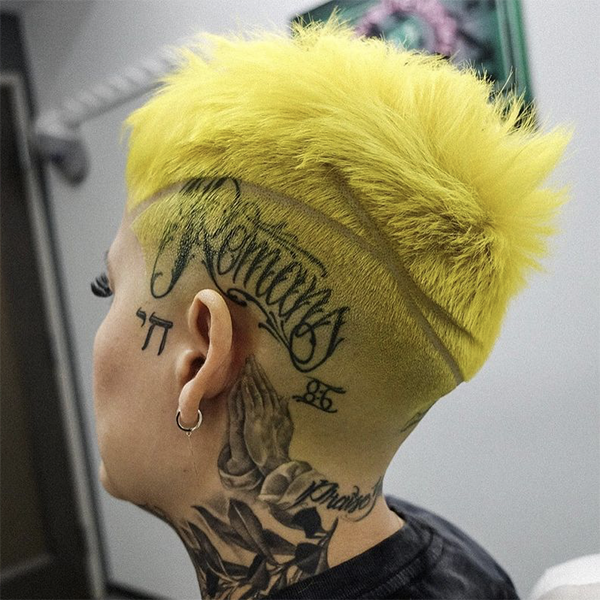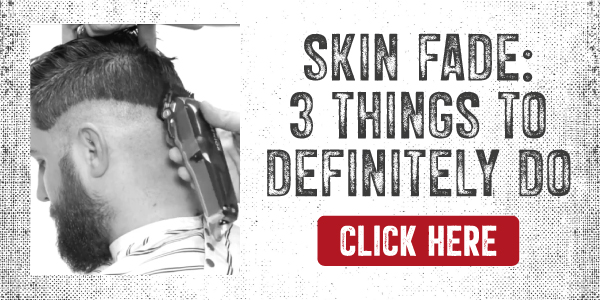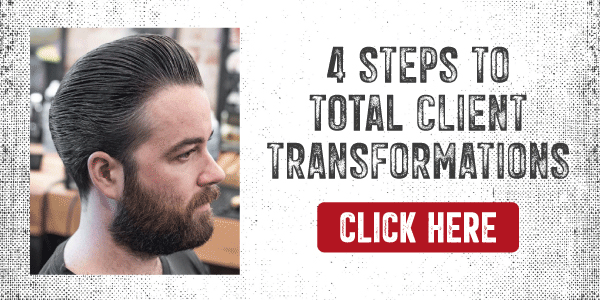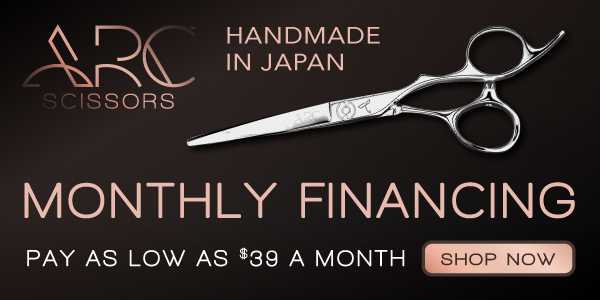How To Implement Gender-Neutral Pricing
What Would You Do: Implementing Genderless Pricing In The Salon
The traditional salon pricing menu sets men’s cuts at a lower price than women’s cuts, but is it time to let go of this notion? When a BTC reader asked about genderless pricing, our community gave so many fantastic tips! We’re rounding up the best ones below, including how to change your service menu to be gender-inclusive and why gender inclusivity is important.
This is the DM we received from a BTC reader:
“How do we/should we charge the same price for men’s short haircuts vs. women’s short haircuts? We are from a medium-sized city and some of our stylists think we should move away from male/female pricing on our menu, specifically when it’s for short hair. But HOW do we really do that? I feel like clients think short hair is short hair, but most of the stylists I work with feel a women’s short haircut is more detailed? Is it based on time? Techniques used? Any advice from stylists or salons that already do this would be a huge help.”
Need some advice? DM us on Facebook and Instagram!
Is Gendered Pricing Legal Where You Live?
First off, some states mandate that salon service menus cannot be structured by gender. This is a rule in California, New York and Massachusetts. Some counties across the country may also implement similar mandates, but this varies by region, according to The Dresscode Project, an alliance of hair salons and stylists that advocate for and educate on gender-neutral salon pricing.
Why Is Gender-Neutral Pricing Important For The Industry?
More salons are moving to gender-neutral pricing to create inclusivity and safer spaces for all clients, not just folks who identify within the gender binary.
Ninety-three percent of LGBTQ community members have been misgendered at the salon. Misgendering someone can contribute to gender dysphoria, aka feelings of discomfort or distress in individuals who feel mismatched between their biological sex and their gender. Doing away with gendered pricing helps reduce these feelings of discomfort or distress in folks. Giving a client a gender-affirming salon experience can be life-changing for the client.
Why Is Gender-Neutral Pricing A Smart Business Move?
Basing your service menu off of factors such as time, technique or length can be more convenient for booking, plus it may widen your customer base. @beautybyweetzie works at Logan Parlor, a Chicago salon that has been gender-neutral since opening.
“I work for a gender-free, LGBTQ-inclusive salon, and we price based on length of hair AND demand on stylist’s time. Newer, less experienced stylists (level 1) have a lower tier than a more seasoned stylist (say, level 3) and prices differentiate between barber style cut, short scissor, chin-shoulder and collarbone-mid back,” she explained on Instagram. “Our guests love this system and our non-binary guests appreciate not being forced to ‘choose a gender’ when getting a cut. Hair has no gender and it’s time we move away from ‘men vs women’ and think about our time spent on long or short hair.”
Here’s what Larisa Love’s (@larisadoll) advice was on Instagram: “You tell them JUST THAT! We are a gender-neutral salon…I am a gender-neutral artist and I charge based on length, thickness and inspiration, NOT the sex. I have one rate for all haircuts. When it comes to color, that’s when my prices differ.”
More input from other community members:
“A client pays for what we leave on their head. Not how much we take off. That should be considered when pricing.” – Pam Carnal-Connolly
“I work at a salon in Seattle and we don’t charge based on gender. Each stylist has one haircut price. That price is based on experience, length of career, etc. I think people think short hair is quicker but it’s not. Short men’s cuts, pixies, and everything in between take more time because there is no hiding anything. Someone is paying for your time and experience, not the actual haircut. Gendered pricing is a thing of the past. You will have a few grumbles when you first switch over but just stick with it. People will respect the change. 😁” – @dansemacabre333
Pricing Based On Service Complexity
Sofie Pok (@staygold31) shared what she’s learned as an award-winning barber: “When I started out, I charged differently for length, because that’s what people generally did in different shops. I always noticed salons charged more for men’s cuts than I did inside barbershops, and it never made sense to me because I know how much more detailed work I put into a men’s cuts than even a basic salon men’s cut (which was always priced higher).”
“The more seasoned I got, I realized I put in the same amount of work and time into each cut, so I started to charge kids, men and women the same. It cut down the people that weren’t fit for me and opened more spots for the ones who really want to come see you! I look at it more of service slots and less of how much length I’m cutting. When it comes to short SKIN-tight hair, there’s not much room for error because you can really see how well it’s done or NOT. 😂 I hope barber pricing can always go up! Just my opinion ✌🏼”
“We say that our prices are based ‘on the complexity of the service.’ We get to decide what combination of factors go into that, but it’s not based just on time. I won’t charge a senior woman with wispy strands more than I will a man with a precise fade, but I will charge someone more if they need a long hair blowout and lots of texturizing afterwards no matter who they are. The key is that many factors can make the work harder or easier, and no one can shave off a portion of their bill because they think they don’t need a shampoo or style.” – Ann Sanderson
“I charge based on what I do, not gender. It’s amazing how many guys come in wanting perms but think it will be cheaper for them…UMMM no, I’m using the same product, rods and time.” – Tina Frederick
Pricing Based On Length
“I worked at a very inclusive salon and we did away with gendered haircuts as it’s about the hair, not the gender you identify with. Clipper, short, medium and long. When talking about long hair trims and such, another price included was a maintenance cut and a transformation cut. It takes much more time and effort the first time you cut an angled bob into long hair vs tidying it up the next cut. Pricing was charged accordingly…as with every service, you pay for the time you take up. Not ‘it evens out, because some are fast, some are slow.’” – Corine Strube
“I charge by hair length and amount of styling (beyond a basic blow-dry to check the shape) involved. Why should a woman getting her pixie cut trimmed and who doesn’t want styling pay more than a guy with hair like Jason Momoa who wants it cut and then for me to use the smoothing iron?! Often women end up paying more because they generally ask for more styling and tend to have longer hair, but my prices go like, short hair no styling is $X, short hair with round brushing is $Y, short hair with thermal styling is $Z, etc.!” – Heather Sung
“I do clipper cut, short wet cut, long wet cut (if I have to section with clips) and cut and style. Color prices have always been the same.” – Pamela Jones
Pricing Based On Clippers Vs. Scissors
“I charge differently for barber cuts (utilizes mostly clippers with some scissor work) and scissor cuts (exclusively uses scissors and blow-dry takes longer). 👍🏼” – Sparrow Styling
“I basically charge one price for longer-ish hair that is a 100% scissor cut and another price for a clipper cut where at least two-thirds of the hair is cut with clippers. So far, my clients haven’t complained. I have lots of men with long hair who happily pay the ‘women’s’ price.” – Hayley Ann Chaffin
“I do clipper cut price and scissor cut price. My shears don’t care about gender 🖤🖤” – @kamistylist
“We offer a ‘barber cut’ & ‘stylist cut’ with a detailed description of each in our online booking service menu.” – @radicaljason
Pricing Based On Time
“Depends on the time involved. I should and will be pricing my time at $1 per minute or $60 per hour. Some clients don’t want shampoo or much style. So no menu or price list at my station. A quickie is a quickie, and they will return.” – Jacqueline Cole
“I implemented a time-based price structure for all of my haircuts a couple years ago and it’s been working great. My menu includes (shortest appointment time to longest appointment time):
- Bang trim
- Basic clipper cut (one guard)
- Faded clipper cut (multiple guards)
- Short (no clippers)
- Long
- New client (extra time for more thorough consultation, styling/product knowledge)
- Transformation haircut (big length/style change)
I started with what I wanted my hourly rate to be and determined service prices based on how long each service takes me. Almost every other working person makes a consistent hourly base wage, why shouldn’t independent hairstylists?” – @katiepdxhair
“Pricing should always start from the perspective of ‘how much time is consumed in that service?’, followed by ‘how technically challenging is that service?’ and ‘what products are needed to execute the service?’” The gender identity of the person wearing the haircut is irrelevant. You can provide examples in your haircut pricing, such as ‘we consider short to be this length.’ You can also cite specific instances where a short cut would be more technical, and take more time like a bob cut, where you have to do both wet and dry cutting to perfect the shape.” – @sprucedandy
“Price it to time – a wash and cut is $X; a wash, cut, and blowout is $Y. Anyone with short hair won’t need a blowout and it eliminates the male/female aspect.” – Lizza Bollow
“We charge by time. And resources used. If it’s a quick clipper cut and takes less than half an hour, then you get what’s considered the ‘men’s’ pricing. If it takes longer than half an hour and I have to use heat tools to style it, then you’re gonna get charged more.” – Timothy Murphy
“I’ve done this by pricing my time. I offer a 30min, 45min, and 60min cut each at its own price. Every NEW guest must book a 60min for first appointment and then we determine from there what they should schedule for next time. I also let everyone know that if they want to make a change at their future appointment to let me know prior to, so I can adjust the time if necessary. It’s a little messy at first when transitioning but in the long run it saves time. and we all know at the end of the day, time is money.” – Mackenzie Cottle












